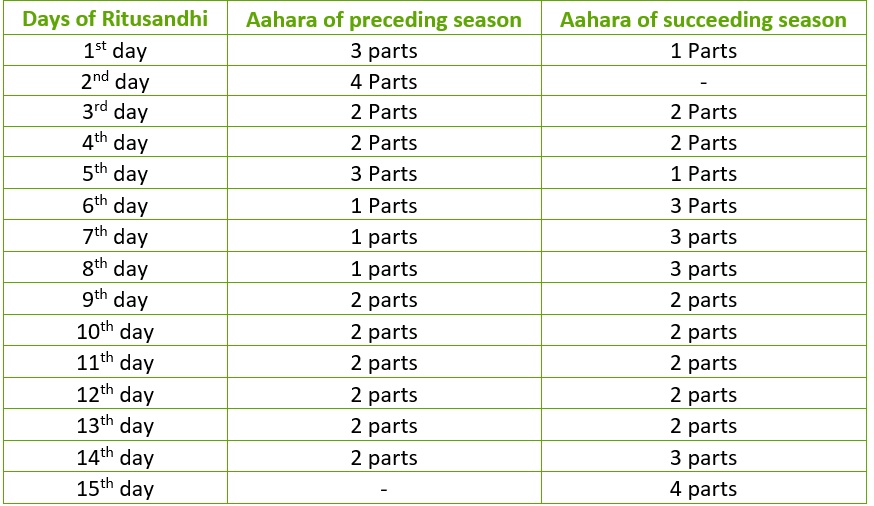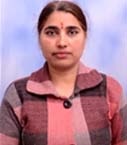Biological Modifications in Ritusandhi : An Overview

DOI:
https://doi.org/10.54060/a2zjournals.ijahr.51Keywords:
Rituasandhi, Sandhi kala, Ritucharya, Swaasthya rakshanAbstract
The remarkable evolution of Ayurveda, from its sacred origins to the modern era, prompts reflection on the vast potential this ancient science still holds. Its continuous survival through countless centuries itself attests to the scientific methodology rooted in its distinctive core principles, which have stood the test of time. Among these, the concept of Ritu and Ritusandhi has been recognized as a fundamental doctrine, playing a key role in the manifestation of numerous diseases. Just as the human body follows a natural circadian rhythm and internal biological clock, these seasonal transitions influence every as-pect of human physiology. Vagbhata elaborates on Ritusandhi at the conclusion of Ritucharya. The term Ritu denotes sea-son, while Sandhi refers to the junction or connection between two phases. This signifies that Ritusandhi is the transitional period where one season merges into the next. It spans a total of 14 days — comprising the final seven days of the outgoing season and the first seven days of the incoming season. Because human health is closely tied to environmental factors, shielding oneself from environmental stressors during these seasonal shifts becomes essential. Such transitional periods tend to lower immunity and foster conditions that promote the onset of various ailments. Understanding and adopting pre-ventive strategies during Ritusandhi can help refine dietary choices, lifestyle habits, and thus prevent seasonal disorders (e.g., allergic reactions, urticaria, conjunctivitis, viral infections, colds, coughs, etc.). Since the primary aim of Ayurveda is the preservation of health — or Swasthya Rakshana — the importance of Ritusandhi has been given considerable emphasis in Ayurvedic literature. This review article highlights how acknowledging and adapting to seasonal transitions, as prescribed in Ayurveda, can play a vital role in maintaining optimal health and preventing seasonal afflictions.
Downloads
References
Trikamji VYA. Charaksamhita of Agnivesa with Ayurvedadipika commentary by Sri Chakrapanidatta. Sutrasthan, Chapter 11, Verse 3. Reprint edition. Varanasi: Choukhamba Prakashan; 2014. p. 67.
Trikamji VYA. Charaksamhita of Agnivesa with Ayurvedadipika commentary by Sri Chakrapanidatta. Sutrasthan, Chapter 11, Verse 3. Reprint edition. Varanasi: Choukhamba Prakashan; 2014. p. 67.
Trikamji VYA. Charaksamhita of Agnivesa with Ayurvedadipika commentary by Sri Chakrapanidatta. Sutrasthan, Chapter 11, Verse 3. Reprint edition. Varanasi: Choukhamba Prakashan; 2014. p. 67.
Kunthe AM. Ashtanga Hridayam Sutrasthana. Chapter 3, Verses 1–2. Delhi: Choukhamba Sanskrit Pratishthan; 2005. p. 37.
Shastri HS. Ashtang Hridayam of Vagbhata with Sarvangasundara commentary by Acharya Arunadatta and Ayurveda Rasayana by Acharya Hemadri. Sutrasthan, Chapter 4, Verse 62. Varanasi: Chaukhamba Publications; 2016.
Trikamji VYA. Charaksamhita of Agnivesa with Ayurvedadipika commentary by Sri Chakrapanidatta. Sharirsthan, Chapter 5, Verse 3. Reprint edition. Varanasi: Choukhamba Prakashan; 2014. p. 325.
Trikamji VYA. Sushruta Samhita of Sushruta with Nibandhasamgraha commentary by Acharya Dalhana. Sutrasthana, Chapter 15, Verse 3. Reprint edition. Varanasi: Chaukhamba Publications; 2017. p. 67.
Trikamji VYA. Charaksamhita of Agnivesa with Ayurvedadipika commentary by Sri Chakrapanidatta. Sutrasthan, Chapter 6, Verse 6. Reprint edition. Varanasi: Choukhamba Prakashan; 2014. p. 44.
Trikamji VYA. Charaksamhita of Agnivesa with Ayurvedadipika commentary by Sri Chakrapanidatta. Sutrasthan, Chapter 6, Verse 7. Reprint edition. Varanasi: Choukhamba Prakashan; 2014. p. 44.
Tripathi B. Sharangdhar Samhita of Sharangdhara. Purva Khand, Chapter 2, Verse 44. Varanasi: Chaukhamba Publica-tions; 2007.
Shastri HS. Ashtang Hridayam of Vagbhata with Sarvangasundara commentary by Acharya Arunadatta and Ayurveda Rasayana by Acharya Hemadri. Sutrasthan, Chapter 3, Verses 2–8. Varanasi: Chaukhamba Publications; 2016. p. 37.
Shastri HS. Ashtang Hridayam of Vagbhata with Sarvangasundara commentary by Acharya Arunadatta and Ayurveda Rasayana by Acharya Hemadri. Sutrasthan, Chapter 3, Verse 42. Varanasi: Chaukhamba Publications; 2016. p. 47.
Sastri HS. Ashtanga Hridayam of Vagbhata. Sutrasthana, Chapter 12, Verse 24. Varanasi: Chaukambha Orientalia; 2018. p. 196.
Shastri A. Sushruta Samhita. Sutrasthana, Chapter 3, Verses 21–23. Varanasi: Chukhamba Sanskrit Sansthan; 2010.
Shastri HS. Ashtang Hridayam of Vagbhata with Sarvangasundara commentary by Acharya Arunadatta and Ayurveda Rasayana by Acharya Hemadri. Sutrasthan, Chapter 3, Verse 41. Varanasi: Chaukhamba Publications; 2016. p. 47.
Shastri HS. Ashtang Hridayam of Vagbhata with Sarvangasundara commentary by Acharya Arunadatta and Ayurveda Rasayana by Acharya Hemadri. Sutrasthan, Chapter 3, Verse 36. Varanasi: Chaukhamba Publications; 2016.
Trikamji VYA. Charaksamhita of Agnivesa with Ayurvedadipika commentary by Sri Chakrapanidatta. Sutrasthan, Chapter 30, Verse 36. Reprint edition. Varanasi: Choukhamba Prakashan; 2014. p. 587.
Shastri HS. Ashtang Hridayam of Vagbhata with Sarvangasundara commentary by Acharya Arunadatta and Ayurveda Rasayana by Acharya Hemadri. Sutrasthan, Chapter 2, Verse 21. Varanasi: Chaukhamba Publications; 2016. p. 29.
Shastri HS. Ashtang Hridayam of Vagbhata with Sarvangasundara commentary by Acharya Arunadatta and Ayurveda Rasayana by Acharya Hemadri. Sutrasthan, Chapter 2, Verse 1. Varanasi: Chaukhamba Publications; 2016.

Downloads
Published
How to Cite
CITATION COUNT
Issue
Section
License
Copyright (c) 2025 Dr Nisha Lipate, Dr. Yeshwant R. Patil, Dr. Prasad P. Deshpande, Dr. Bhaskar M. Perke

This work is licensed under a Creative Commons Attribution 4.0 International License.























